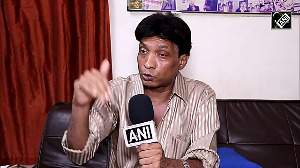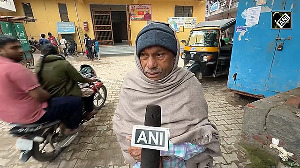The Indian Medical Association states that cases are likely to rise further before coming down in Kerala as about 50 per cent of its population is still susceptible to the virus.
Shine Jacob/Business Standard reports.

The Kerala model on Covid management has come under severe criticism with the state reporting over 70 per cent of the fresh cases in the country.
The only sign of relief for the state was that the death rate was 0.51 per cent -- the lowest among major states.
On the other hand, Kerala's test positivity rate was 19.22 per cent as against 17.13 per cent in the seven days ending August 27.
The daily positivity rate was 2.45 per cent on August 27, it has been less than 3 per cent for the last 32 days.
When the second Pinarayi Vijayan government took charge, a notable change in the cabinet was the replacement of then health minister K K Shailaja with Veena George, a former journalist.
Shailaja had received appreciation from across the globe for her handling of the pandemic in the state.
Some experts are now indicating that all was not so well with the strategies employed in handling the pandemic during the previous government.
They cited hesitancy shown in involving the private sector for Covid treatment and vaccination, easing up of norms for festive seasons and massive under-reporting of cases during the Pinarayi Vijayan government's previous tenure as reasons that might have led to the ongoing crisis.
"There was no Kerala model as represented in the public. Unlike the first wave, they are not able to hide or under-report fresh Covid numbers. Hence, it is not a failure of George, but a collective failure of the Left government in their Covid strategy since the beginning," says Dr S S Lal, a former official with the World Health Organisation and an expert in public health.
George did not respond to questions from Business Standard.
Lal said flaws in strategy during Shailaja's time included over-dependence on rapid antigen tests, conducting an average of only about 50,000 tests a day as against 150,000 now, and keeping the private sector out of Covid defence till October 2020 despite more than 80 per cent doctors and nurses being in the private sector and 70 per cent patients' dependence on it.
George had told the media that a major reason for the rise in cases is people violating rules in home quarantine. The minister said 35 per cent of people were infected at home.

The Centre has asked Kerala and Maharashtra to consider night curfews in areas with high case numbers.
Union Home Secretary Ajay Bhalla asked the two states to have adequate intervention in geographical areas with a higher infection through measures such as contact tracing, vaccination drives, and Covid-appropriate behaviour.
The Indian Medical Association said Kerala's decision to open up during Onam and Bakri Eid also backfired. It stated that cases are likely to rise further before coming down in Kerala as about 50 per cent of its population is still susceptible to the virus as compared to a national average of 30 per cent based on the sero survey.
"People's lifestyles, relaxation in curbs, opening up of schools and colleges, and the way they celebrated Onam and Bakrid naturally added to the rising number of cases. The only plus point is that the mortality rate is less than elsewhere in the country," says Dr J A Jayalal, president, Indian Medical Association.
However, Dr T S Anish, a member of Kerala's expert panel on Covid-19, had a different take.
"Other states had already reported a large number of cases, and the fresh figures are lower now. The seropositivity rate of 44 per cent compared to a national average of 65 per cent shows that Kerala's Covid defence mechanism was a success," says Dr Anish.
"This shows that the effectiveness of lockdown was better in Kerala and is reporting it more effectively."
Feature Presentation: Ashish Narsale/Rediff.com












 © 2024 Rediff.com -
© 2024 Rediff.com -